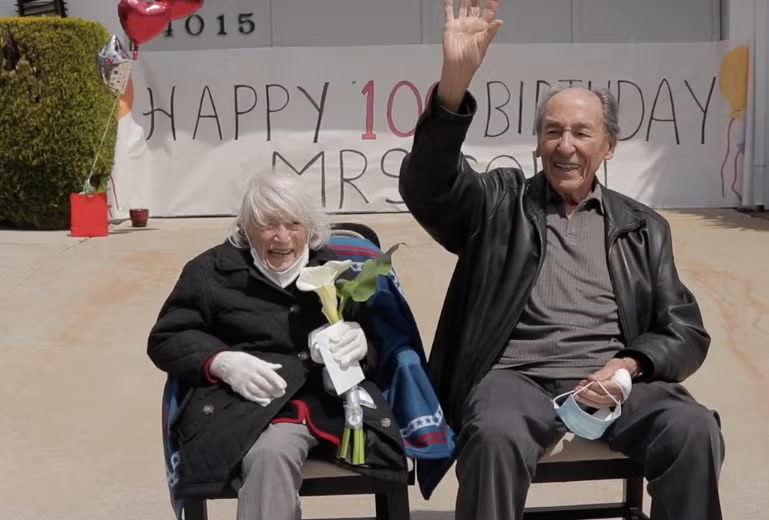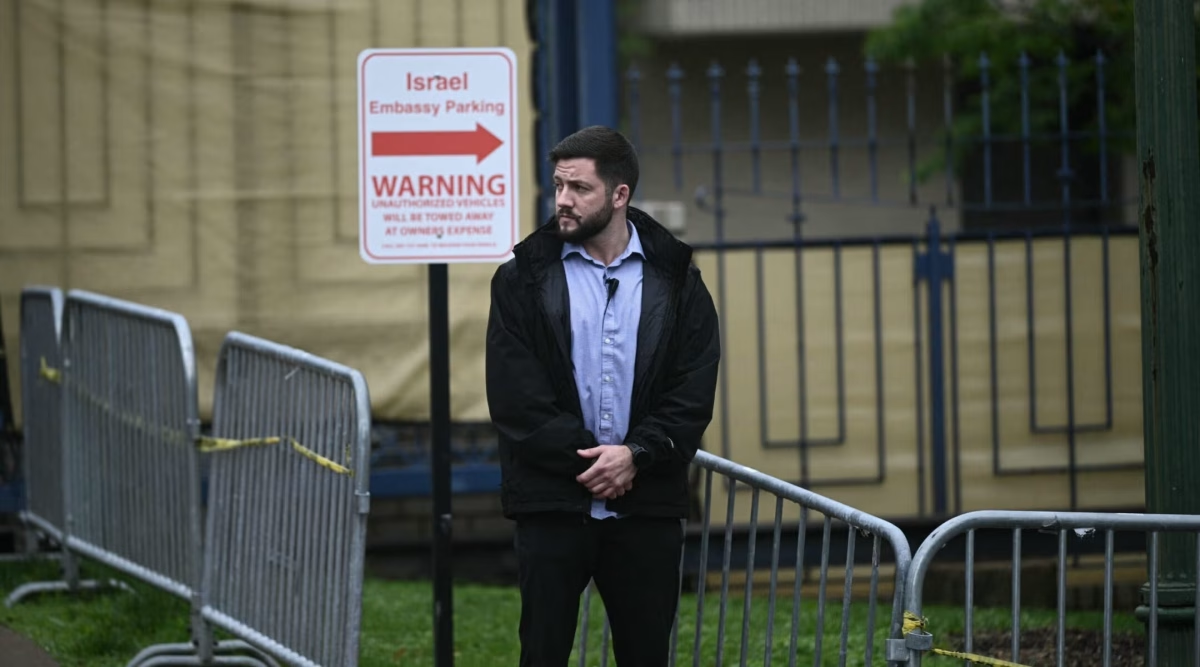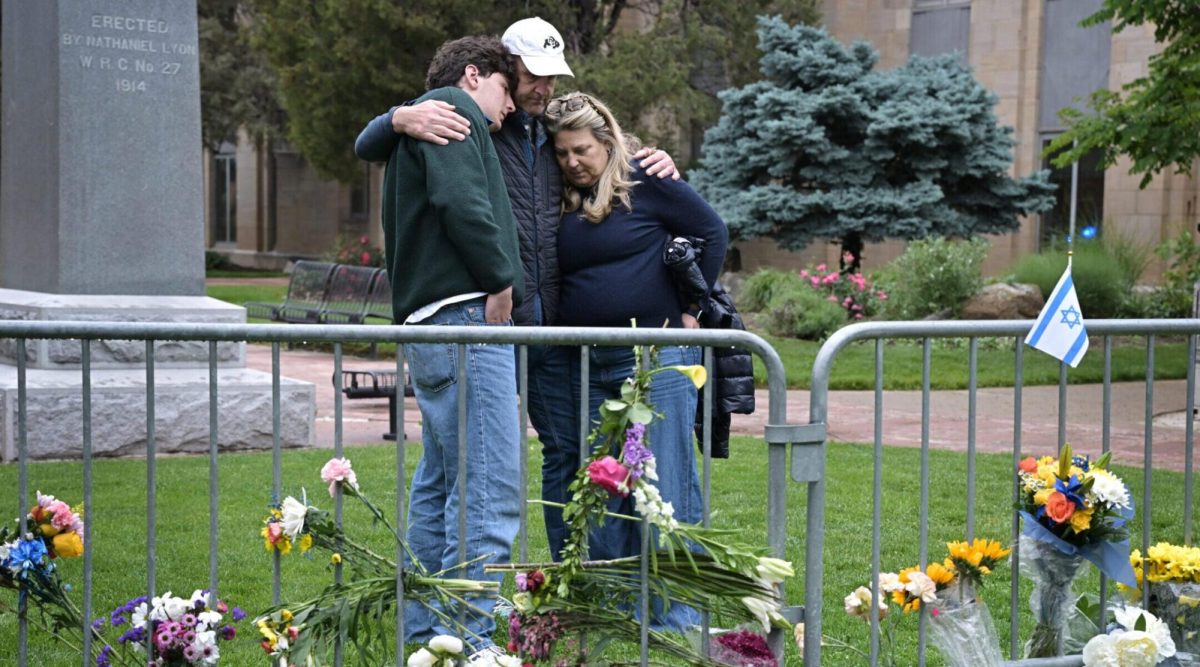OSWIECIM, Poland (JTA) — In a typical, pre-pandemic year, about 2.3 million people a year visit Auschwitz, the infamous Nazi death camp where nearly 1 million Jews were murdered.
About 30,000 — or roughly 1% — of them also visit a nearby museum that represents the last vestige of how Jews in the area once lived.
The Auschwitz Jewish Center opened in 2000 in Oswiecim, the sleepy town less than a mile from the notorious concentration camp. It includes a museum with thousands of artifacts, a small café that also functions as a community center and a synagogue that is the only one remaining from Oswiecim’s Jewish heyday.
For centuries before the Holocaust, this town of around 40,000 situated about 30 miles east of Krakow had a large and vibrant Jewish community, with no fewer than 20 synagogues. About 8,500 of the town’s pre-Holocaust population of 14,000 was Jewish.
Now, not a single Jew lives in Oswiecim. But the Chevra Lomdei Mishnayot synagogue, built in 1913 and a gathering place for the few dozen local Jews who survived the Holocaust, hosts prayer services for the visitors who depart from the typical Auschwitz itinerary and venture into town. While there is no resident rabbi, the synagogue does keep a kosher Torah scroll in its ark.
“The sort of prayer you see here, by Jewish people who had just visited Auschwitz, is often intense,” added Tomasz Kuncewicz, the center’s director, who is not Jewish.
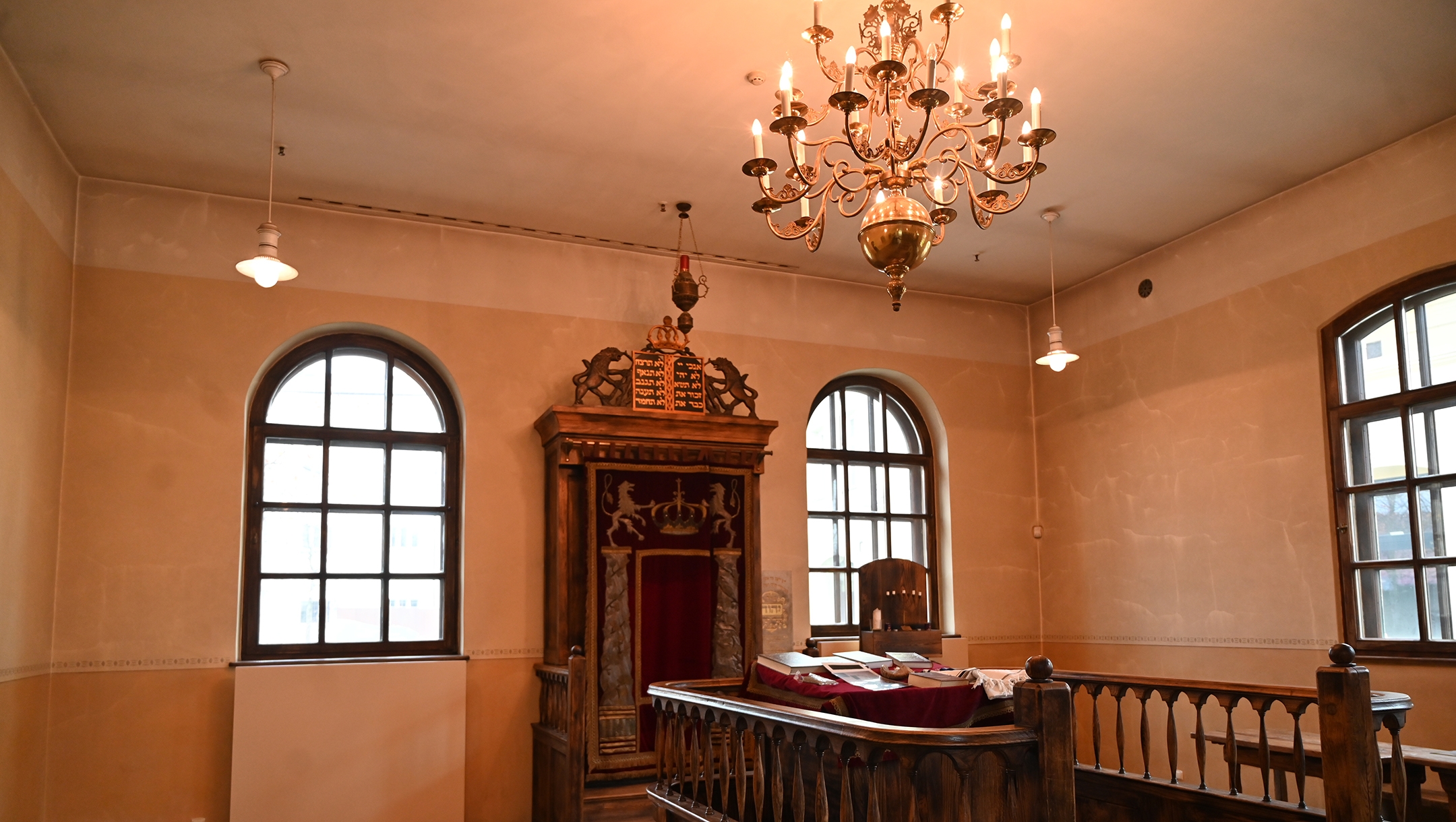
The Auschwitz Jewish Center in Oswiecim, Poland, comprises the only synagogue that the Germans did not destroy there. (Cnaan Liphshiz)
The museum was founded just a few months after the death of Oswiecim’s last remaining Jew, Szymon Klüger.
A childless Holocaust survivor who suffered from emotional problems and phobias, Klüger lived in a house adjacent to Lomdei Mishnayot. Shortly after his death, the late New York entrepreneur and philanthropist Fred Schwartz opened a museum at the synagogue. Klüger’s old home was renovated and reopened as Café Bergson, a cafeteria and education center that’s now part of the same institution as the museum.
“We want to represent Jewish life here before the Shoah, not the anonymity of mass death,” Schwartz, who died in 2016, told the Jewish Telegraphic Agency at the opening ceremony.
Over time, the museum has intersected with a community that is committed to remembering Jewish life in Oswiecim. A newly established Facebook group called “My Jewish roots are from Oswiecim” is helping connect descendants of Oswiecim Jews from around the world — and yielding artifacts and archive material for the museum.
“If it weren’t for the museum, very few people would even know that a Jewish community had existed here for 400 years, its memory would have been disappeared just like what happened to thousands of communities across Poland,” said Shlomi Shaked, the Facebook group’s Israeli founder, whose mother was born in Oswiecim.
The Facebook group has generated unlikely connections. In September, when Miri Doron and Dana Rab-Eyal, two women from Israel, discovered they were likely related while commenting on a photo on the Facebook group showing two Jewish women in Oswiecim in 1940.
And in July, when Nava Meir Kopel, a pensioner from the town of Nes Tziona near Tel Aviv, recognized her cousin, Kuba Zajdband, in a photo taken in Oswiecim in 1957 and uploaded to the Facebook group.
“Seeing him there is just moving beyond words,” Meir Kopel wrote.
Some of the Jews with roots in Oswiecim are donating family photos to the Auschwitz Jewish Center. The museum uses the artifacts it collects — from family photos and memorabilia to elaborate chandeliers found under the synagogue’s floorboards, potentially hidden there by local Jews who would never return — to educate visitors.
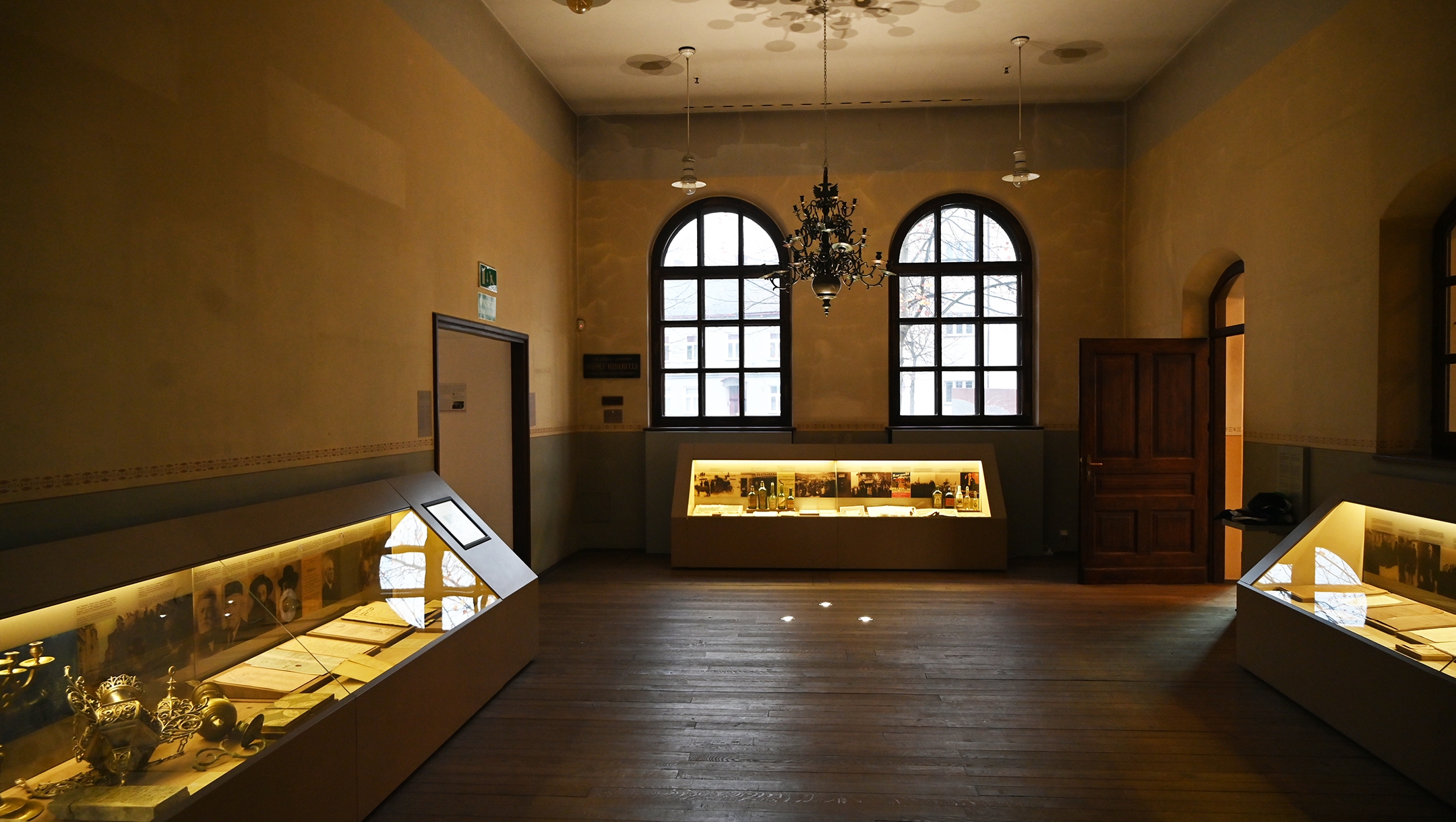
The permanent exhibition at the Auschwitz Jewish Center in Oswiecim, Poland features expensive chandeliers that local Jews might have hid under the floorboards. (Cnaan Liphshiz)
Communist authorities nationalized the building after the war, gutted it and turned it into a carpet warehouse. In 1998, the synagogue became the first piece of communal property returned by the government to a Polish Jewish community. The recipient community, Bielsko-Biala, later donated the space to the Auschwitz Jewish Center, which restored the original furnishings and revived it as a house of prayer.
“We prayed there together, with groups from all over the world, and I had a powerful, strong experience,” said 20-year-old Ayalah Gura, who visited the Oswiecim synagogue with her school from Israel in 2019. “I realized that mitzvahs, Jewish culture, faith, they’re all for a greater goal, a common denominator. The togetherness I experienced there was overwhelming but also positive. I felt as though I’d rediscovered Judaism and prayer.”
Many visitors from abroad are surprised to learn that a Jewish community even existed near the infamous camp, said Artur Szyndler, the center’s resident historian.
“The reason many Jews settled here was the excellent railway and transportation connections here, which were ideal for factory owners,” Szyndler said.
He added that similar considerations led the German authorities to build here Europe’s largest concentration and death camp, whose barbed wires, watchtowers and gas chambers are perhaps the world’s most recognizable symbols of the Holocaust’s horror.
Some local Jews were used as slave laborers to build Auschwitz, which began as an internment camp for Polish non-Jews before it became an epicenter for the genocide of Jews. But most were deported to ghettos and then shipped back to be murdered in their hometown.
“It’s not like Oswiecim Jews had more knowledge of the Final Solution than others,” Kuncewicz said, referring to the Nazi plan to murder all Jews.
The Germans blew up the Great Synagogue of Oswiecim, which used to stand atop a hill not far from the museum. In 2019, the synagogue’s former foundations became a monument to its past, featuring a metal box with a picture of the building amid dozens of horizontal stone slabs, signifying toppled Jewish headstones.
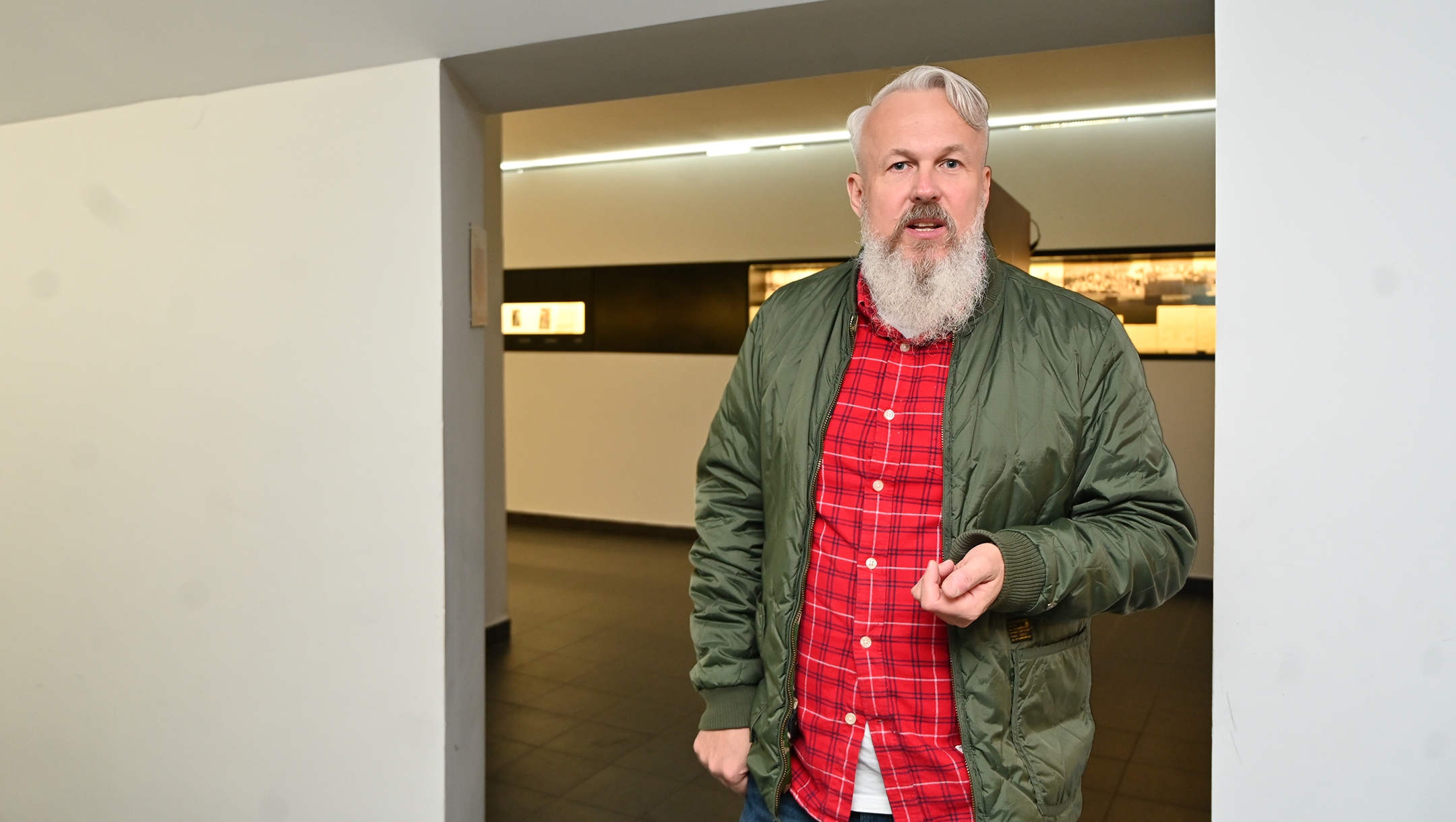
Historian Artur Szyndler tells a reporter about the Auschwitz Jewish Center in Oswiecim, Poland, Nov. 9, 2021. (Cnaan Liphshiz)
Many Jews from Oswiecim had positive feelings toward the town before the Holocaust, according to Chaim Fischgrund, a 74-year-old teacher from Israel whose father, Avraham Baruch, grew up there.
“My father always spoke warmly of Oswiecim,” Fischgrund told JTA. “He used to tell me about swimming in the river, and when I visit the place I see it through his eyes, not as a place of murder of Jews.”
CNN reporter Wolf Blitzer, whose father was born in Oswiecim, said that on his first visit to Auschwitz in 2015, he also visited Oswiecim. “I couldn’t believe how close it was,” said Blitzer, whose Jewish parents left Poland after World War II.
The Jewish community of Oswiecim “was entirely typical,” Kuncewicz said. “It had good relations with the town’s non-Jews, a long history and a vibrant existence. The only thing unusual about it is that the Nazis built a death camp near it.”
—
The post A mile from Auschwitz, a restored synagogue recalls thriving Jewish life in Oswiecim appeared first on Jewish Telegraphic Agency.





